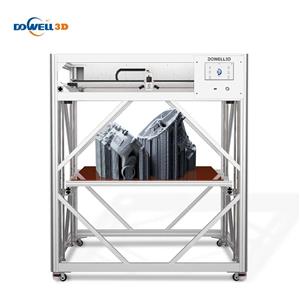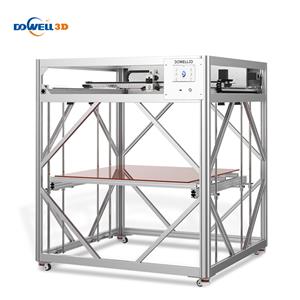What are the advantages of pellet 3D printer compared with FDM3D printing?
At present, the linear filament used in the existing FDM 3D printers, such as ABS, PLA, or PETG, all use granular raw materials, and the granules are converted into wires through wire drawing equipment. This step determines that the molded wire is much more expensive than the raw material. Once a 3D printer can directly use granular raw materials as filaments for direct printing, this will undoubtedly greatly reduce the cost of materials required for printing.
Of course, the advantages of pellet 3D printers are not only reflected in the cost of filaments. As long as they are thermoplastic plastic materials, even carbon brazing, composite metals, composite ceramics, etc., as long as they can be extruded through a hot melt nozzle, pellets can be used. Printing with 3D printers greatly expands the range of available materials and the scope of application of the equipment. At the same time, due to the different designs of the extrusion nozzles, the efficiency of printing and forming is much more efficient than FDM 3D printers.
So, what kind of objects can be made by such a 3D printer or what fields can it be applied to? Here is a brief introduction. According to the materials used, the application fields of granular 3D printers are: prototype mold industry, furniture design industry, automobile Parts manufacturing industry, rehearsal building mold industry, portrait sculpture industry, medical brace industry, visual art industry, etc.
It can be seen that in the future, as the technology of granular 3D printers becomes more and more mature, with higher precision, and more and more common applications in the industry, granular 3D printers will replace traditional FDM 3D printers and will be mainly used in various industrial manufacturing industry.





